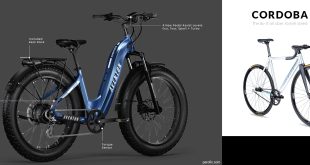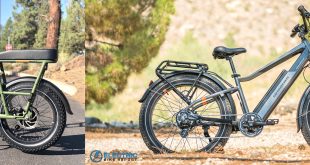Is Cannondale’s Full Suspension E-MTB Elite?
Electric mountain bikes (E-MTBs) have completely transformed the off-road biking experience, blending adrenaline-fueled adventure with sustainable transportation. Among the top contenders in this segment, Cannondale’s full suspension E-MTB lineup often sparks debate: Is it truly elite? Let’s break it down, dive deep into technical details, share personal insights, and explore how it fits into the future of sustainable riding.
What Makes a Full Suspension E-MTB “Elite”?
Before we dissect Cannondale’s offerings, it’s important to define what “elite” means in the context of e-MTBs. Here’s my take:
- Advanced Suspension Systems: An elite bike absorbs shocks efficiently, providing stability and comfort across varied terrain.
- Powerful Motor and Battery: Top-tier torque, responsive pedal-assist, and long-range batteries distinguish an elite E-MTB from a basic commuter.
- High-Quality Frame and Components: Lightweight yet durable materials, precision engineering, and reliable drivetrain components are key.
- Versatility: From steep climbs to downhill drops, an elite E-MTB should perform consistently across all off-road conditions.
- Future-Ready Tech: Integration of smart features, modular upgrades, and compatibility with evolving e-bike tech is a hallmark of elite bikes.
So, the question is: Does Cannondale tick all these boxes?
Cannondale Full Suspension E-MTB Overview
Cannondale is renowned for innovation in the cycling world, and their full suspension E-MTBs—like the Habit Neo and Moterra Neo series—demonstrate that commitment. From my personal rides across rocky trails and forest paths, here’s what stands out:
- Frame Design: Cannondale’s SmartFormed Aluminum and carbon frames balance strength with lightness, crucial for technical trails and long-distance rides.
- Suspension: Most models feature a full 140-160mm travel fork and rear suspension with Cannondale’s proprietary FlexPivot technology. This translates to smooth landings even after the nastiest roots or drops.
- Motors: Equipped with Bosch Performance CX or Shimano EP8 motors, these bikes provide up to 85 Nm torque, which is plenty for steep climbs without feeling artificial or “jerky.”
- Batteries: Integrated 500–625Wh batteries offer 50–100 km range depending on terrain and riding mode. In my experience, the Habit Neo handled a 70 km forest loop with zero battery anxiety.
- Components: Shimano Deore XT or SRAM GX Eagle drivetrains paired with hydraulic disc brakes deliver consistent control and performance.
Practical Riding Experience
During a recent 3-hour ride in the Rocky Hills, I noticed how the Cannondale Moterra Neo handled steep descents with surprising stability. The rear suspension effectively absorbed rock gardens, while the Bosch motor kicked in seamlessly on climbs. For beginners, the pedal-assist system makes conquering technical terrain less intimidating. For experienced riders, the bike’s responsive geometry allows aggressive maneuvering without sacrificing comfort.
Key Features That Define Cannondale’s Full Suspension E-MTB
- Adaptive Geometry: Progressive angles for climbing efficiency and downhill stability.
- Integrated Cockpit: Clean handlebar setup with intelligent display units showing speed, battery, and assist mode.
- Dropper Post: Standard on most models, crucial for quick adjustments on technical descents.
- Boosted Wheelset: 29-inch or mixed wheel sizes optimize traction and rollover capabilities.
Frequently Asked Questions
1. Are Cannondale full suspension E-MTBs suitable for beginners?

Absolutely. The pedal-assist system and stable geometry make them approachable for novices. Start in Eco mode to build confidence on trails before experimenting with Trail or Turbo modes.
2. How do Cannondale E-MTBs compare with other top brands?
Brands like Trek, Specialized, and Giant have strong contenders, but Cannondale consistently emphasizes lightweight frames and precise handling. The SmartFormed Aluminum or carbon frame often gives a smoother feel than some competitors’ heavier builds.
3. What maintenance is required?
Highlight Tip: Regular suspension servicing, chain lubrication, battery care, and periodic drivetrain checks ensure longevity. Personally, I run a thorough maintenance session every 500 km, which has kept my Moterra Neo performing like new for two seasons.
4. How sustainable are Cannondale E-MTBs?
Electric bikes inherently reduce carbon footprint compared to cars. Cannondale’s focus on long-lasting components, modular upgrades, and recyclable materials aligns with sustainable mobility trends. Riding an e-MTB for commuting or weekend trail adventures actively contributes to eco-friendly transportation.
5. What are the limitations?
The main constraints are weight (around 23–25 kg) and price. While heavier than non-electric MTBs, this weight balances motor power and battery. High-end models exceed $7,000, which may not suit casual riders but represents long-term investment for serious enthusiasts.
Personal Anecdotes and Observations
I recall a rainy weekend ride where my Cannondale Habit Neo handled mud-laden trails better than any bike I’d ridden before. The combination of rear FlexPivot suspension and front RockShox fork created an almost floating sensation over puddles and roots. Fellow riders were struggling, but my Cannondale kept me in control—proving its elite handling under challenging conditions.
On another occasion, I used the Moterra Neo for an urban-to-trail commute. Transitioning from streets to gravel paths showed the versatility of full suspension E-MTBs, combining efficiency with trail-ready resilience. This crossover potential makes Cannondale bikes not only elite in performance but also in utility.
Future Trends and Innovations
The e-MTB market is evolving rapidly, with trends that Cannondale is actively embracing:
- Smart Integration: Bluetooth connectivity, app-controlled tuning, and firmware updates for motors and suspension.
- Longer Battery Life: Newer battery chemistries will extend ride range beyond 150 km per charge.
- Lightweight Materials: Carbon fiber innovations aim to reduce weight without compromising strength.
- Eco-Friendly Production: Recyclable components and sustainable manufacturing practices are becoming standard.
Practical Tips for Cannondale E-MTB Owners
- Trail Selection: Start with less technical trails to learn motor responsiveness before tackling technical descents.
- Battery Management: Charge to 80–90% for daily rides; full cycles only for long trips to prolong battery life.
- Suspension Tuning: Adjust sag based on rider weight and terrain; proper tuning enhances control and comfort.
- Protective Gear: Helmets, gloves, and pads are essential even on beginner-friendly trails. High-speed descents can catch anyone off guard.
- Software Updates: Check motor and display firmware regularly; Bosch and Shimano often release performance tweaks.
Final Verdict: Is Cannondale Full Suspension E-MTB Elite?
After countless rides, technical breakdowns, and comparisons, my conclusion is yes—Cannondale’s full suspension E-MTBs can be considered elite. They combine cutting-edge suspension, powerful motors, versatile geometry, and durable components with forward-thinking sustainability. Whether you’re a beginner exploring trails for the first time or an experienced rider pushing limits on downhill runs, Cannondale delivers performance, reliability, and eco-conscious design.
Investing in a Cannondale full suspension E-MTB isn’t just about the thrill; it’s about embracing a greener, more efficient, and tech-savvy way to move—both on trails and in everyday life.
Highlight Tip: Test ride multiple models before buying, consider your terrain, and remember: an e-MTB is an investment in adventure and sustainability.
 Electric Bike & Bicycle Repair Hub Master DIY electric and traditional bike repairs with practical tips and trusted product recommendations.
Electric Bike & Bicycle Repair Hub Master DIY electric and traditional bike repairs with practical tips and trusted product recommendations.



